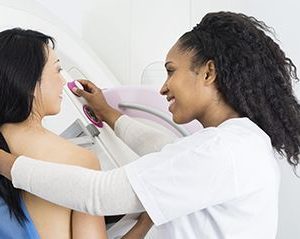- Skip Storing This Everyday Product in the Fridge Door
- Green Tea + B3 Pairing May Boost Brain Health
- Navigating Your Midlife Crisis: Embracing New Possibilities
- City Raccoons Showing Signs of Domestication
- Mapping the Exposome: Science Broadens Focus to Environmental Disease Triggers
- One Week Less on Social Media Linked to Better Mental Health
- Your Brain Changes in Stages as You Age, Study Finds
- Some Suicide Victims Show No Typical Warning Signs, Study Finds
- ByHeart Formula Faces Lawsuits After Babies Sickened With Botulism
- Switch to Vegan Diet Could Cut Your Greenhouse Gas Emissions in Half
What Every Woman Needs to Know About Breast Cancer Screening

Catching breast cancer early is key to making it easier to treat and survive, according to the American Cancer Society (ACS).
The organization aims to highlight early detection, noting that screening with mammography has helped breast cancer death rates drop 43% since 1989.
“Breast cancer is the most common cancer in women (after skin cancer) and the second most common cause of cancer mortality. Breast cancer screening with mammography is important because early detection saves lives,” said Robert Smith, senior vice president of early cancer detection science for the cancer society.
“Research has shown regular mammograms are associated with a substantially reduced risk of dying from breast cancer,” Smith said in an ACS news release.
ACS guidelines encourage average-risk women to begin regular screening mammograms — a low-dose X-ray image of the breasts — at age 45. It’s an option to begin screening as early as age 40, according to the guidelines, which were created by a panel of doctors and patient advocates.
Annual screening should continue up until age 55 and then can transition to biennial screening, if a woman prefers.
Women should also speak with their doctor about family history, genetics and lifestyle choices that can influence risk, as well as familiarize themselves with how their breasts normally look and feel.
At age 75, women can continue getting mammograms if they’re in good health and expected to live at least 10 more years, the ACS suggests.
Particular women who are at high risk for breast cancer based on certain factors should get a breast MRI and a mammogram every year.
“Women who receive regular mammograms and are diagnosed with breast cancer are more likely to be diagnosed earlier, less likely to need aggressive treatments and more likely to be cured,” Smith said. “Once a woman begins breast cancer screening, it is important that she commits to regular, on-time examinations. Regular screening, rather than irregular or occasional screening, offers the greatest benefit.”
More information
The U.S. National Cancer Institute has more on mammograms.
SOURCE: American Cancer Society, news release, Sept. 29, 2023
Source: HealthDay
Copyright © 2025 HealthDay. All rights reserved.










